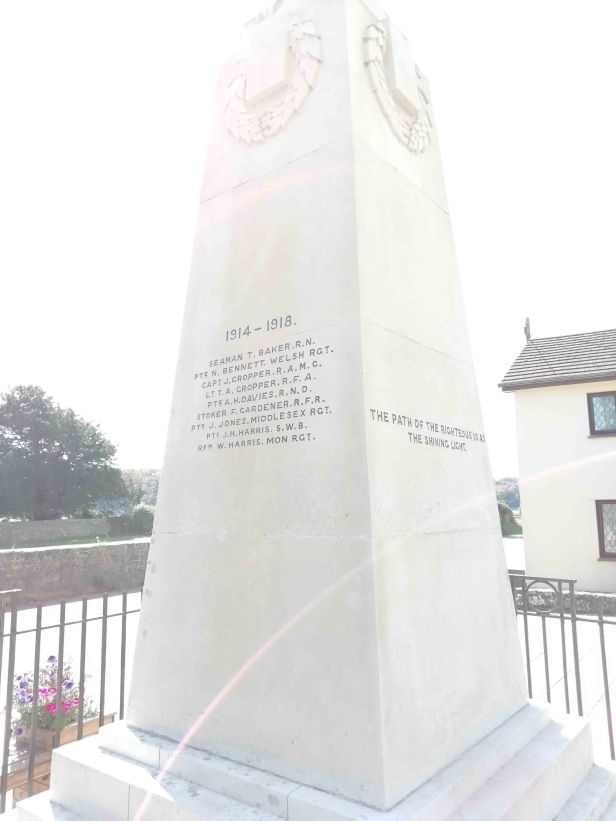The First and Second World War memorial in the Gwent village of Caerwent takes the form of an obelisk surrounded by iron railings but with a further more distinctive feature. For while some memorials contain mechanisms to record time – sundials and clocks – others attempt to keep a light burning to remember the war dead. This obelisk mounted by a lamp topped with a cross.
It therefore sits in the centre of the village outside the entrance to the church as a beacon as well as a memorial.
Further formal details can be found on the IWM database, but as usual these pay little attention to form and spatial context, focusing primarily on a brief description and the texts inscribed upon it. Further online websites have the same focus here and here. Perhaps it is hidden within the morass of Roman records, but I couldn’t locate the Coflein record for this Grade II listed monument.
 I visited in daylight and I don’t know how often the lamp is actually lit and how it looks at night (presumably at least it is list for Remembrance Sunday?). But I do want to flag up the many sensorial ways war memorialisation takes place, not only stone and scripts, but light too. This is reflected in the Biblical quote on the northern face of the obelisk:
I visited in daylight and I don’t know how often the lamp is actually lit and how it looks at night (presumably at least it is list for Remembrance Sunday?). But I do want to flag up the many sensorial ways war memorialisation takes place, not only stone and scripts, but light too. This is reflected in the Biblical quote on the northern face of the obelisk:
THE PATH OF THE RIGHTEOUS IS AS
THE SHINING LIGHT
Beyond that, I also want to use it to illustrate another example of a war memorial’s biography and spatial relationships. Relating to both, there is of course the augmentation of the monument with 10 additional names of men whose lives were lost in the Second World War to the 19 on the western and eastern faces who died in the First World War.
I would point out the pair of very different memorial benches, situated and dedicated to one individual (a community councillor) on the east side, and to the British Legion with built in flower tubs on the south facing the church.





In Australia some of our small rural cities have war memorials on top of nearby hills as beacons – I am thinking of Albury and Goulburn. A study of Australian war memorials was done by Ken Inglis. I have a copy of the 1998 1st edition but there was a new edition in 2005 https://web.archive.org/web/20080429220300/http://www.mup.unimelb.edu.au/catalogue/0-522-85479-6.html